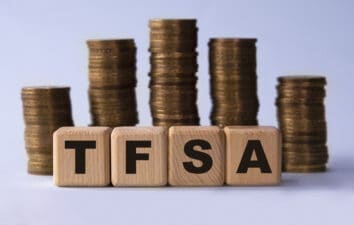Canadian Imperial Bank of Commerce (TSX:CM)(NYSE:CM) and National Bank of Canada (TSX:NA) are the fifth- and sixth-largest banks in Canada in terms of total assets, and both of their stocks represent great long-term investment opportunities today.
However, in order to keep our portfolios diversified, we must only choose one, so let’s take a closer look at each company’s earnings results in fiscal 2015, their stocks’ valuations, and their dividends to determine which is the better buy today.
Canadian Imperial Bank of Commerce
CIBC is the fifth-largest bank in Canada, and its stock has fallen over 5% year-to-date, including a decline of over 6% since it released its earnings results on the morning of December 3 for its fiscal year ended on October 31, 2015. Here’s a summary of 10 of the most notable statistics from fiscal 2015 compared with fiscal 2014:
- Adjusted net income increased 4.5% to $3.82 billion
- Adjusted earnings per share increased 5.7% to $9.45
- Total revenue increased 3.7% to $13.86 billion
- Net interest income increased 6.1% to $7.92 billion
- Non-interest income increased 0.6% to $5.94 billion
- Total assets increased 11.7% to $463.31 billion
- Total deposits increased 12.7% to $366.66 billion
- Total loans and acceptances, net of allowance, increased 8.5% to $290.98 billion
- Total assets under administration increased 8.4% to $1.85 trillion and total assets under management increased 12.2% to $170.47 billion
- Book value per share increased 15.7% to $51.25
At today’s levels, CIBC’s stock trades at 10 times fiscal 2015’s adjusted earnings per share of $9.45, 9.7 times fiscal 2016’s estimated earnings per share of $9.66, and 9.3 times fiscal 2017’s estimated earnings per share of $10.10, all of which are inexpensive compared with its five-year average price-to-earnings multiple of 11.4 and the industry average multiple of 12.6. It also trades at 1.84 times its book value per share of $51.25, which is inexpensive compared with its five-year average market-to-book value of 2.17.
In addition, CIBC pays a quarterly dividend of $1.15 per share, or $4.60 per share annually, giving its stock a 4.9% yield. It is also important to note that the company has increased its annual dividend payment for five consecutive years, and it is currently on pace for 2016 to mark the sixth consecutive year with an increase.
National Bank of Canada
National Bank is the sixth-largest bank in Canada, and its stock has fallen over 17% year-to-date, including a decline of about 7% since it released its earnings results on the morning of December 2 for its fiscal year ended on October 31, 2015. Here’s a summary of 10 of the most notable statistics from fiscal 2015 compared with fiscal 2014:
- Adjusted net income increased 5.6% to $1.68 billion
- Adjusted earnings per share increased 4.9% to $4.70
- Total revenue on a taxable equivalent basis increased 6.1% to $5.98 billion
- Net interest income increased 6.9% to $2.97 billion
- Non-interest income increased 5.3% to $3.01 billion
- Total assets increased 5.2% to $216.09 billion
- Total deposits increased 7.5% to $128.83 billion
- Total loans and acceptances increased 8.5% to $115.24 billion
- Total assets under administration and management increased 3.7% to $358.14 billion
- Book value per share increased 9.7% to $28.26
At today’s levels, National Bank’s stock trades at 8.7 times fiscal 2015’s adjusted earnings per share of $4.70, 8.6 times fiscal 2016’s estimated earnings per share of $4.76, and 8.1 times fiscal 2017’s estimated earnings per share of $5.05, all of which are inexpensive compared with its five-year average price-to-earnings multiple of 10.1 and the industry average multiple of 12.6. It also trades at 1.45 times its book value per share of $28.26, which is inexpensive compared with its five-year average market-to-book value of 1.87.
In addition, National Bank pays a quarterly dividend of $0.54 per share, or $2.16 per share annually, giving its stock a 5.3% yield. Investors must also note that the company has increased its annual dividend payment for five consecutive years, and it is currently on pace for 2016 to mark the sixth consecutive year with an increase.
Which bank is the better buy today?
Here’s how each bank ranks when comparing their earnings results, their stocks’ valuations, and their dividends:
| Metric | CIBC | National Bank |
| Earnings Strength | 1 | 1 |
| Current P/E Valuation | 2 | 1 |
| Forward P/E Valuations | 2 | 1 |
| Market-to-Book Value | 2 | 1 |
| Dividend Yield | 2 | 1 |
| Dividend Growth | 1 | 1 |
| Average Ranking | 1.67 | 1 |
As the chart above depicts, both companies reported very strong earnings results in fiscal 2015 and have impressive streaks of annual dividend increases, but National Bank’s stock trades at more attractive valuations and it has a higher dividend yield, giving it an easy win in this match up.
With all of this being said, both banks represent great long-term investment opportunities today, so Foolish investors should strongly consider initiating positions in one of them before the end of the year.








